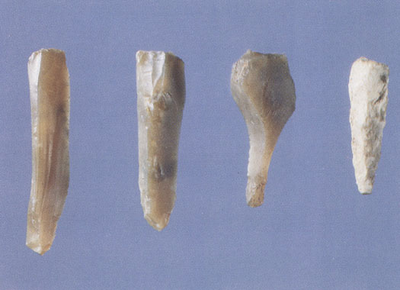How were amber beads made?
For making large amber ornaments, natural amber lumps were preferred. They were pierced and a string was drawn through. Holes could be bored with a thin borer of flint or bone. In a few cases the point of a broken flint borer has been found still stuck in a lump of amber. It must have annoyed the jewellery craftsman that both the drill and amber lump had to be scrapped! One of the most popular bead types was tubular beads. Of the c. 50,000 amber beads known from the Neolithic, 40,000 are tubular. As a rule the short beads were sawn off from a larger bead. This was done with the aid of a cord that was run quickly back and forward. Much of the amber we find in sacrificial offerings consists of half-finished amber lumps that had not yet been given their final form. The Stone Age people did not concern themselves with whether the amber had a polished surface. It would automatically get one as it rubbed against the owner’s body.

